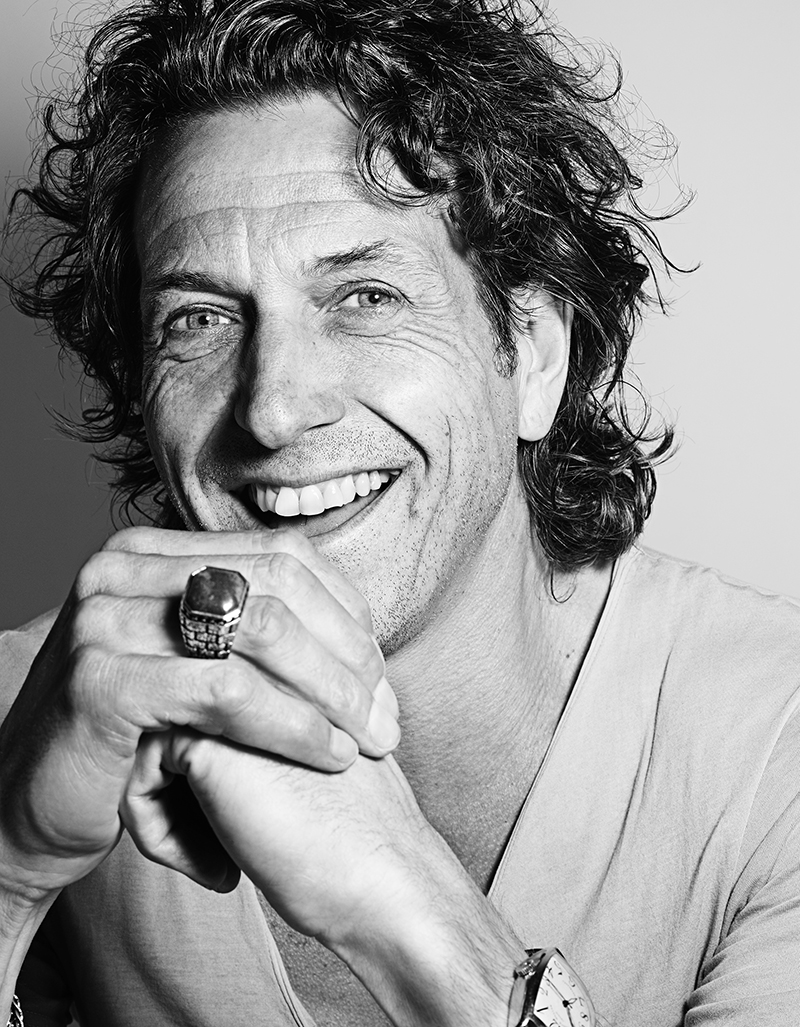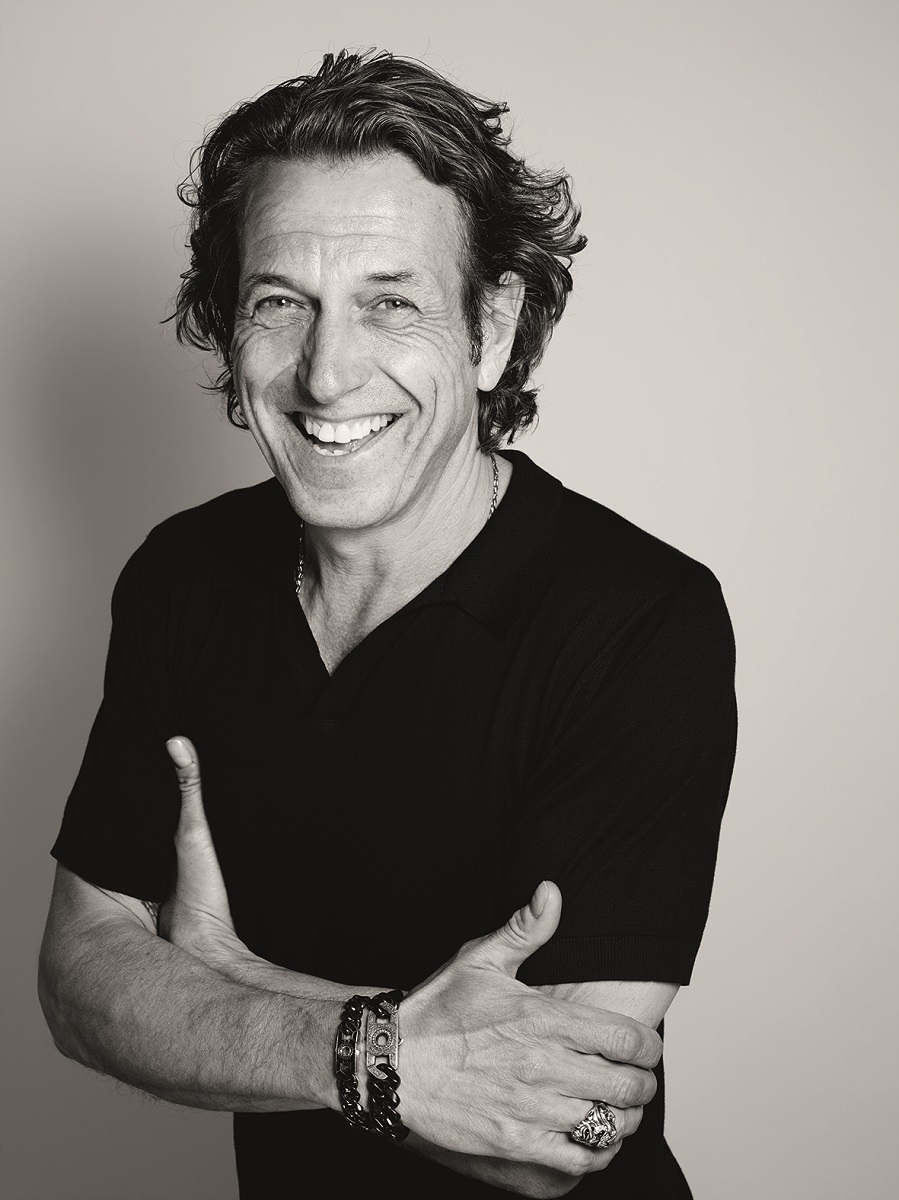This website uses cookies so that we can provide you with the best user experience possible. Cookie information is stored in your browser and performs functions such as recognising you when you return to our website and helping our team to understand which sections of the website you find most interesting and useful.
Tempus meets iconic jewellery designer Stephen Webster
By Rose Adams | 17 October 2018 | Style
Why the famed designer – who has made pieces for icons including Madonna and Christina Aguilera – is more in demand than ever before

Stephen Webster is one of the most prolific jewellery designers of our time. Renowned for his avant-garde collections inspired by a host of references from nature to music to literature, Webster has never been afraid to push the creative boundaries. Since the inception of his eponymous brand some 25 years ago, Webster has amassed a glittering following of the world’s biggest A-Listers, creating pieces for the likes of Christina Aguilera, Kate Moss, Jennifer Lopez and Kate Beckinsale to name a few. Webster was also famously hand-picked to design Madonna and Guy Richie’s wedding bands – but more on that later.
Environmentally conscious in the selection of the colourful, fine gems used to create his signature cocktail rings, bracelets and necklaces, Webster’s brand was one of the first to be awarded the prestigious Fairtrade gold stamp. Today, sustainability remains one of the most fundamental elements of his business, evidenced in latest project ‘The Last Straw’. The sterling silver piece was created in partnership with Plastic Oceans Foundation in response to the earth’s plastic pollution epidemic.
As the brand embarks on an exciting new chapter with the launch of contemporary tableware, Tempus sat down with Webster to delve deeper into the story behind his inspirations and stratospheric success and gain an exclusive insight into the brand’s exciting future.
Hi Stephen, how do you translate your inspiration into your designs?
Whether it’s a tune, something that’s impacted my life musically, a book – everything that I come across inspires me to be honest. Anything that I encounter and have a feeling for is worth seeing how we can translate into jewellery and I’ll know quite quickly if it’s going to work. If it feels like a struggle then it’s probably not going to work – not because it’s more effort but because it has to feel instant in the early design stages. Once I get a feeling that we can make a piece or a collection out of an idea, that’s when my design team and I will start to develop how it might sit as a jewellery collection. I find it very easy to look below the waterline and discover something I’ve not seen before, something that I feel will help us continue the journey into a collection could last as long as 20 years.
How do you keep coming up with such innovative ideas for your bold collections when each once is so different?
I consider that to be the most important part of my job now. I’ve got a team who look to me for direction, so my responsibility is to keep coming up with an idea that they can build upon. I’m very happy to say that 20 years ago I was a jeweller who made jewellery that shook things up a bit, but to be honest, back then that was the only thing I had to be. Things have completely changed now so I need to keep bringing things to the table, because if I can’t, then I haven’t really got any purpose.
How do you develop a concept from idea to inception?
My team have been with me for a very long time and they’re still often surprised by where a piece starts and where it ends, but because they’ve got used to being surprised and thinking ‘ok that sounds like it feels right for Stephen Webster’ we work on it together. My head designer has been with me for 16 years and thinks the same way I do, so it just progresses naturally. If you work for a company like ours, where the strength lies in its creativity, you’ve got to be on board.
You use a lot of bold jewels in your collections, how do you source such vibrant gems?
I know where to go but I never know who’s got what because that’s the nature of it. If everyone was using something that was just from one source, it wouldn’t be so interesting. There are big shows with more material on offer such as the Tucson Gem & Mineral Show Arizona where you can literally buy anything that comes out of the ground. It’s very inspiring because it’s quite ad-hoc – you’ve got people from middle earth selling things there. Anyone that goes there is completely blown away. I’ve always been interested in looking for something that’s not obvious because if it works, then you’ve got already got something that’s ahead of the curve. It’s quite difficult to stick with conventional materials and claim to be different because the only way you’re going to do that is if it’s the best of the best – which in the conventional sense starts to become only for the very elite. Million dollar rubies and such are not for everyone and my jewellery is much more inclusive than that.
How important is sustainability for you when sourcing your jewels?
We were among the first group of people who were awarded the Fairtrade gold stamp and I wanted to know what that meant, so I went to visit the mines in Peru with Fairtrade which was a real experience. It made me realise how important the responsibility of the materials we use is and that was more than ten years ago. Now we work very closely with Positive Luxury and I’m on panels with them, because you simply can’t be in the luxury business and not have responsibility. Five years ago it didn’t matter so much other than to us, but now it’s becoming more and more important to people with every purchase that’s made. You can’t say ‘I’ve got a Fairtrade gold license but I don’t know where my rubies come from,’ it has to be applied to everything – including your working practices.

Would you agree that sustainability is equally as important to the consumer buying jewellery as it is for the brands and manufacturers supplying them?
Absolutely. We do a lot of red carpet events and I noticed that shift a few years ago. People started to question ‘is it okay for me to wear diamonds?’ and I would say ‘yes, as long as they’re responsibly sourced’ and then show them how ours are sourced. There has to be an element of trust involved but you’ve also got to be open to being inspected – you can’t police yourself.
You’ve been in this industry a long time now, do you ever feel pressure to keep up with how rapidly it evolves and go away from your signature style?
No, we have done that in the past and it’s always been a mistake. If you feel pressured to be everything to everyone, you realise that you can’t be and no one wants that from you anyway. You may as well try to identify your own DNA and try to stick with it – that doesn’t mean you can’t keep moving. It’s better not to try to cover every ground when actually this is the bit you’re really good at, because in the end there’s someone else covering that ground really well already. The best pieces we do are the ones that tick all of those boxes. This is quite idealistic, but I think we know enough because of all the years to know the reason why something hasn’t worked is often because we’ve gone off piste.
Can you tell me about your new project ‘The last straw’. How did that come about?
It’s a perfect example of the way I might look at anything. I’ve drawn lots of inspiration from the sea and I watched [the film] A Plastic Ocean and it’s awful, it’s a tragedy. You could argue that a plastic bag serves some purpose, but ultimately we don’t need straws – they don’t decompose and they’re very destructive. It was the idea of it making you angry and that being the last straw – the one that broke the camel’s back. I was skiing with some and I told them about it saying it was going to be engraved with your name and everybody ordered one, and that was my market research which proved it was a good idea. It went way bigger than we ever thought. We donate money from each one sold to Plastic Oceans Foundation and they’re over the moon.
Throughout you career you’ve designed high-profile projects for a number of global icons – including Madonna and Guy Richie’s wedding bands – that must have been such an honour?
I was very excited, it was a real honour. The whole story was so ridiculous and fun and a real big opportunity for us, it did change a lot I suppose. Suddenly we started getting all this attention so it helped us grow. That would be quite difficult to recreate these days, you could get it from something like a big royal wedding or some celebrities I’m sure, but the connection was such that I would cynically say that might cost you a lot of money to do that now. That was never the case back then; people would come shopping for me which is quite different to product placement. That kind of recognition is great, it’s so exciting for us as a brand.
Who has been your favourite celebrity client ever?
We had a long relationship with Christina Aguilera , she owns the most amount of our jewellery and did become the face of our brand through being a friend. She even played a concert for us once in Las Vegas and that was pretty amazing because I didn’t pay for it, it was just for us. Those things are above and beyond and you can’t expect that from everyone you make a piece of jewellery for. We did a really great ring for her, way before it became the trend, a ring that said Christina in a really gothic style writing in black diamonds that went across four fingers. That was pretty cool.
What’s next for you? Do you still have any ambitions left to fill?
We’re shifting towards being more of a design house than just a jeweller. We’ve always created things for people’s homes made of metal, like tableware and now we’re really expanding it. It’s currently a huge potential for us. It seems like people look at us and understand why we would do it, whereas they may or may not for another jeweller and that’s really exciting for us because it’s a whole new world. All I’m doing at the moment is visiting china stocklists, glass stocklists, silversmiths and anywhere where I need to pull in things that you wouldn’t necessarily do in jewellery.
Did you ever envision your brand taking that direction?
I never saw it head this way but it feels like it’s right. We’ve earned our place but to grow is a challenge, mainly because of the newcomers like the big fashion conglomerates who are all jewellers. They have an amazing ability to seduce a client way beyond what we could ever do, so you’re going to lose people to that. That was never there before so you’ve got to try and think, where is there space? The jewellery space is quite crowded but that’s okay because now we can do the best knives or the best glasses and bar tools. Just like our jewellery, these pieces feel very connected to the brand.






